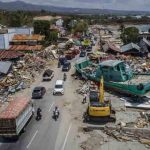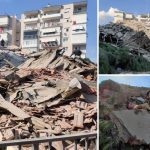Rescuers are digging for survivors of a powerful earthquake that flattened whole villages in Afghanistan, killing more than 1,000 people.
The 6.3-magnitude quake struck Saturday morning in Herat province, a barren landscape dotted with mud brick homes.
Villagers are still using shovels and bare hands to search for more than 500 people missing, the UN says.
Aid, delayed by blocked routes and communication lines being down, only started to trickle in on Monday.
There are fears the death toll could be much higher.
The quake hit Zindajan, a rural district some 40km (25 miles) from Herat city, where “100% of homes are estimated to have been completely destroyed,” according to the UN Office for the Coordination of Humanitarian Affairs (OCHA).
The Taliban government and aid agencies initially struggled to estimate the death toll, or how many remained missing. It’s unlikely officials had population records for such remote villages.
The area is also home to communities displaced by war and drought, making it difficult for the local administration to know exactly how many people have been living there.













